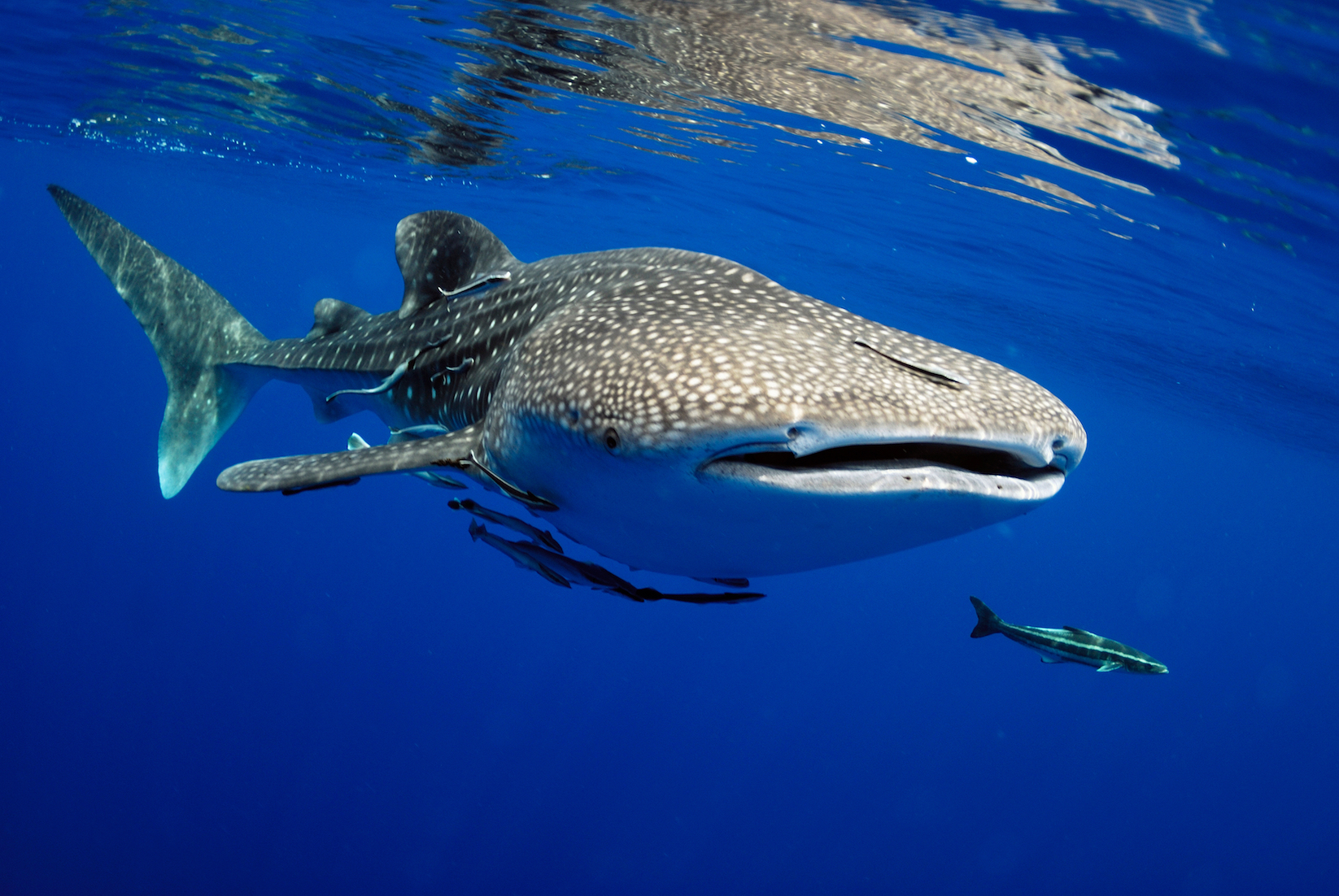
The world’s largest shark species can live up to 130 years
A new study led by Nova Southeastern University (NSU) has found that whale sharks can grow to be more than 60 feet in length, which is over 20 feet longer than previously realized. The researchers have also discovered that male whale sharks can live up to 130 years.
The team from NSU’s Guy Harvey Research Institute (GHRI) collaborated with experts from the Maldives Whale Shark Research Programme for the investigation, which was conducted in the Republic of Maldives. The scientists used a unique approach to study the aging growth dynamics of the whale shark.
“What makes this a novel approach is that we took repeated noninvasive underwater measurements of live sharks over the course of a decade,” said study first author Cameron Perry.
“Up to now, such aging and growth research has required obtaining vertebrae from dead whale sharks and counting growth rings, analogous to counting tree rings, to determine age. Our work shows that we can obtain age and growth information without relying on dead sharks captured in fisheries. That is a big deal.”
The whale sharks came back to the same place every one to two years and individuals could be recognized by their unique spot patterns, making it possible to take repeated measurements of these individuals over many years.
The study revealed that male whale sharks can live as long as 130 years and may grow as large as 61.7 feet on average, which is nearly 17 feet longer than a school bus.
“Growth and reproduction of whale sharks, which are endangered in many places, are poorly understood,” said study co-author Mahmood Shivji, who is the director of NSU’s GHRI.
“When you couple this lack of knowledge with the fact that whale shark products such as fins, meat and oil are highly valuable – they are harvested in many countries – one can quickly see the urgency in learning as much as possible in order to help save these majestic creatures.”
Perry added: “The more we learn about these animals, their growth dynamics, where they go, what areas may be their nurseries, it can lead to a better understanding of their life history, which is imperative to guide conservation efforts.”
The study is published in the Marine & Freshwater Research Journal.
—
By Chrissy Sexton, Earth.com Staff Writer













